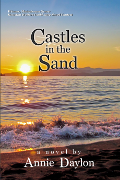by @AnnieDaylon
 “In the particular is contained the universal.” ~Anton Chekov
“In the particular is contained the universal.” ~Anton Chekov
In my early days of writing, I hired an editor who (thankfully) slammed me for the amateur mistake of using generic details (eg. a magnificent staircase.) A sharp lesson, one that I devoured instantly: it is the job of the writer to individualize the object, not to tell the reader how to feel about the object. The reader navigates the story via specific details and makes up his or her own mind about them.
Since then? In first drafts, I use vague description (anything to get the story on the page). Other than that, I steer clear of generalities.
In my quest for details, I have surfed the net, used Social Media, conducted interviews, visited story settings, competed in contests, watched movies and TV series and documentaries, read similar (and different) authors, learned a skill that my character had to learn, and studied the craft of writing via webinars, courses and books.
Recently, I read How to Write a Damn Good Thriller by James N. Frey. I liked his straightforward approach in which he broke story details into five types. I examined his examples and then applied my own:
1. Generic. These details, according to Frey, are “weak because they do not individualize the … thing being described.”
Example: My aforementioned magnificent staircase.
2. Specific. These give “a better image.”
Example: sprawling oak staircase with polished banister and wrought iron balusters.
3. Telling. These “evoke a sense of characters or the situation that generic details cannot.”
Example: In my first draft of a short story, I wrote, “He looked suspicious.” My final draft: How long had he been watching her? She remembered the time she had observed a young coyote eyeing a neighbor’s unsuspecting cat.
4. Clincher. These are “emblematic of the character and help make the character unforgettable.”
Example: I have yet to write one of these. (Maybe, someday.) But here are two you will likely know: a) Life is like a box of chocolates. You never know what you’re gonna get.~ Forest Gump; b) I’ll be back. ~The Terminator
5. Sensuous. These details “appeal to the senses: sights, and smells and sounds and touch and taste.”
Example: In my first draft of my upcoming novel, I wrote: An adorable little house sits fifty feet from shore. My latest draft: Fifty feet from shore, a saltbox house, proudly perched. White clapboard. Forest green shutters. Nary ribbon of paint nor chink of putty gone astray. Three clothes lines loop the front yard, each with a Johnny pole propping up the middle, each pegged with sheets, beige flannel with faded pink horizontal stripes at one end. They hang without flutter, ready to billow at a poke from the wind. Boulders flank the pebbly path to the red front door, misshapen, painted cannon balls, alternating in green and white. A plume of inky smoke lifts from the chimney. Another straight line, awaiting its cue to drift. A perfect, still life painting.
After I had read James N. Frey’s book, and used it as a measuring stick for my own work, I decided that my quest for details is leading me to better writing.
Where does your quest for details take you?
My best to you,


Leave a Reply